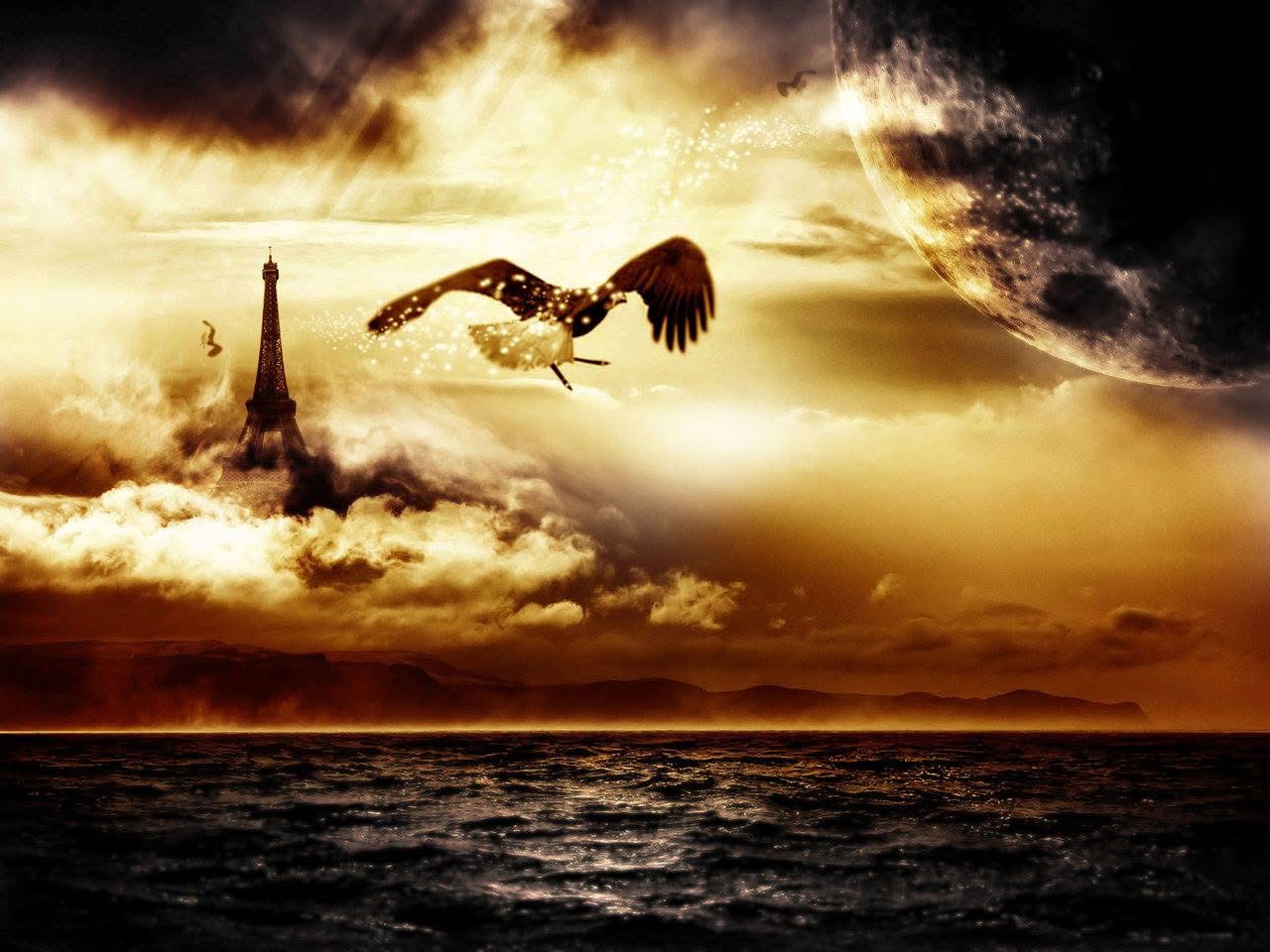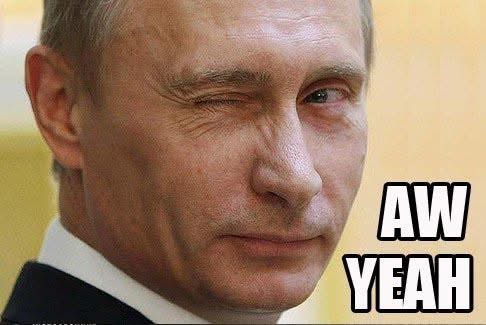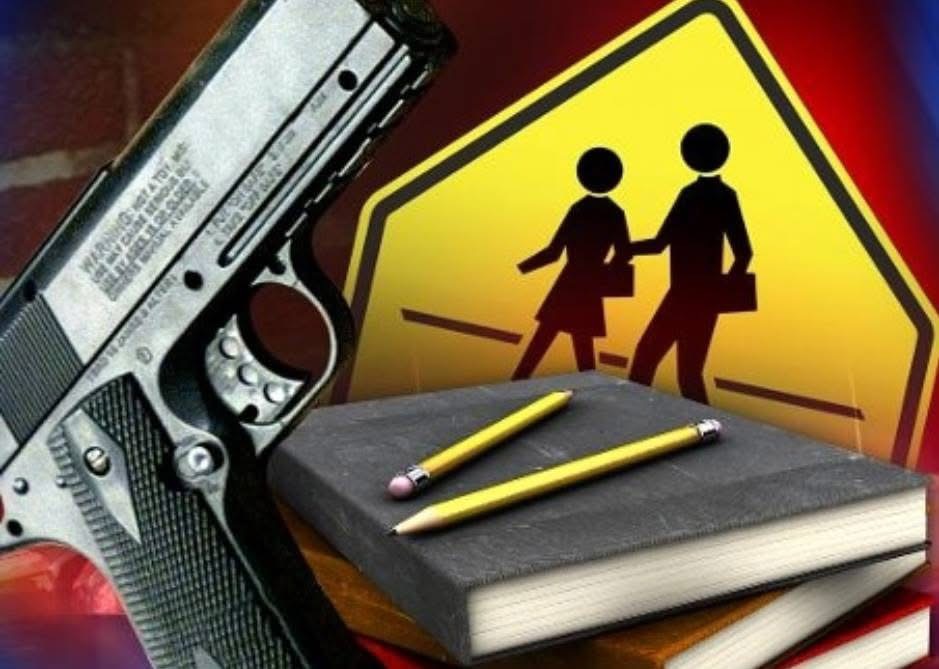ลองเชิง ตอนที่ 4
“ลองเชิง”
ตอน 4
ตุรกี นกหลายหัว จอมพริ้ว ดูเหมือนจะเป็นประเทศที่ได้ประโยชน์มากที่สุด จากเทศกาลอาหรับสปริง ก่อนปี ค.ศ.2011 ตุรกี ก็ไม่ค่อยมีปัญหากับเพื่อนบ้านเท่าไหร่ และตุรกีค่อยๆขยายฐานการเมือง การค้าขาย และวัฒนธรรมของตัวเองไปอย่างเงียบๆมาตลอดเวลา รับปากไปทั่ว และมักจะเลือกยืนถูกข้างในความขัดแย้ง คือข้างที่กำลังได้เปรียบ
นายรอญับ ตอยยิบ เอร์โดกาน (Recep Tayyip Erdogan) ที่เป็นนายกรัฐมนตรีของตุรกีขณะนั้น เป็นผู้นำต่างประเทศรายแรก ที่กระซิบดังๆ บอกให้ มูบารัค ของอิยิปต์ เก็บของลาออก กลับไปเลี้ยงหลานที่บ้านได้แล้ว และเขายังเป็นผู้นำต่างชาติคนแรกๆ อีกเหมือนกัน ที่หันหลังให้กับกัดดาฟี ของลิเบีย เมื่อกัดดาฟีถูกกลุ่มกบฏไล่ล่า ไม่ต่างกับที่เขาหันหลังให้อัสสาด ของซีเรียในตอนแรก เมื่อซีเรียเริ่มมีปัญหา
แต่ เอร์โดกาน เป็นนักการเมืองที่เก๋า เขี้ยวยาว ไม่เสียชื่อเป็นนกหลายหัว เขาเริ่มค่อยๆถอยห่างจากอเมริกาสัก ประมาณ 2 ปีมานี้ และตั้งแต่ถอยห่าง การประท้วงสาระพัดในตุรกี ก็เกิดขึ้นตามสูตร แต่ตุรกีคงมองเห็นว่า ฝ่ายไหนกันแน่ที่กำลังจะได้เปรียบ ทั้งในซีเรีย และตะวันออกกลาง วันนี้ดูเหมือนเขาเลือกข้างแล้ว เป็นข้างที่ไม่ใช่อเมริกาเป็นผู้นำ แต่ก็ยังอึกอักว่าไม่รักอัสซาดของซีเรีย แต่ตอนนี้พวกลูกพี่ที่ตัวมาเกาะใหม่ เขากำลังจะมาช่วยอัสซาด ตุรกี จึงกำลังมึนหัว แต่สงสัยจะสายไปแล้วนะ จะกลับเป็นนกหลายหัวอีก อาจจะไม่เหลือสักหัว
อีกรายที่ได้ประโยชน์ กระโดดข้ามมาอยู่แถวหน้า ทั้งๆที่เป็นประเทศเล็ก คือ การ์ต้า ซึ่งเริ่มเบ่งรัศมีของตนมาก่อน ค.ศ.2011 ไม่นาน ด้วยการยอมให้อเมริกามาตั้งฐานทัพในประเทศตัว และเมื่อน้ำมันบูม การ์ต้าที่พลเมืองน้อย แต่รวยน้ำมัน ก็เลยกระเป๋าบวมไปด้วย การ์ต้าใช้ความเป็นเสี่ยปั้มรุ่นเล็ก แต่มาแรง บวกกับการตั้งสื่อ อัลจาซีรา Al-Jazeera ของตน กระจายเสียง โฆษณาตัวเอง จนดังไปทั่วโลก คนวางแผนเก่งครับ
รัฐบาลการ์ต้าเป็นรายแรกๆ ที่ขยับขาอ้าแขนรับเทศกาลอาหรับสปริง อัลจาซีรา รายงานแบบเอียงไปเอียงมา ไม่ต่างกับซีเอนเอน ในเรื่องของกัดดาฟีของลิเบียและอัสสาดของซีเรีย เขาเล่นตีกันเป็นระนาดวง กับซีเอนเอน บีบีซี เอาซะทั้ง กัดดาฟีและอัสซาด เป็นเผด็จการจอมโหดสมควรตาย
แต่เมื่อบาห์เรนเพื่อนบ้านค่ายเดียวกัน มีปัญหาภายใน เรื่องราวก็คล้ายกัน อัลจาซีรา เกิดเป็นใบ้ หลอดขาด จานดาวเทียมส่งสัญญาณไม่ได้เสียอย่างนั้น ตอนอัลจาซีรา ตั้งขึ้นมาใหม่ๆ ใครไม่อ้างแหล่งข่าวอัลจาซีรานี่เชยสะบั้น แต่ตอนนี้ ใครอ้างอัลจาซีรา ผมว่าไม่เชยนะ แต่ง่าวจัด
ถึงจะเป็นประเทศเล็ก แต่เงินแยะ และมีสื่อใหญ่ระดับโลกอยู่ในมือ การ์ต้า จึงคิดพองตัว สนับสนุนทั้งเงินทุนและกองกำลัง ไปร่วมโค่นกัดดาฟี และโค่นรัฐบาลในตูนีเซีย หวังให้รัฐบาลใหม่ของ 2 ประเทศ นับตนเองเป็นลูกพี่ เรียนเร็วนะไอ้หนู
ส่วนประเทศที่ย่อยยับ ไปกับเทศกาลอาหรับสปริง ไม่มีใครเกินอียิปต์ รองมาก็คือซีเรีย และอีกประเทศที่กำลังเหงื่อแตก รีบปรับกระบวนท่าของตัวเองคือ อิสราเอล
อาหรับสปริง เป็นตัวอย่างของการเดินแผนของอเมริกาในตะวันออกกลาง ที่แย่ที่สุด หรือเยี่ยมที่สุด ที่เราจะต้องค่อยๆดูกันต่อไป
อิยิปต์ นับเป็นมิตรระดับสำคัญของอเมริกามานานนับ 70 ปี นับตั้งแต่สงครามโลกครั้งที่ 2 สถานทูตอเมริกาในอิยิปต์ ช่วงหนึ่งถือว่าใหญ่ที่สุดในโลก ย้อนไปก่อนนั้น อิยิปต์ก็มีความหมายมากกับมหา อำนาจตะวันตกอย่างอังกฤษ เช่นเดียวกัน ถึงเวลาหมดประโยชน์ หรือไม่ต้องการใช้ หรือมีแผนใหม่ อเมริกาก็ไล่ มูบารัค ประธานาธิบดีอิยิปต์ ที่อเมริกาใช้เหมือนพรมเช็ดเท้าให้เก็บของออกไปจากทำเนียบ ไม่ได้ออกไปกลับบ้าน แต่ออกไปนอนในคุกอีกด้วย รอดมาจากการโดนตัดสินประหารชีวิต นี่ก็บุญแล้ว แล้วอิยิปต์ ประเทศที่มีวัฒนธรรมอันยาวนาน เป็นประเทศในความฝันของคนที่อยากเห็นแหล่งอารยะธรรม ที่เป็นหนึ่งในสิ่งมหัศจรรย์ของโลก ก็เหลือแต่ซาก กับกองขยะ ผลงานใครครับ
ซีเรีย กำลังตามมาติดๆ แต่อิยิปต์กับซีเรียต่างกัน อิยิปต์ตกเป็นพรมเช็ดเท้า ถึงเวลาพวกพรมเช็ดเท้าด้วยกัน แทนที่จะช่วยประคอง ดันช่วยกันเหยียบซ้ำ ส่วนซีเรีย เลือกอยู่กับค่ายสู้ตาย จับมือกับลูกพี่อิหร่าน ต่อต้านอเมริกามาด้วยกัน วันนี้อิหร่านไม่มีทางทิ้งซีเรีย
แต่มีไอ้บ้าน้ำลายฟูมปาก ออกมาทำท่าหน้าเครียดตาขึง พูดให้ชาวโลกฟังในที่ประชุมสหประชาติ เมื่อสามสี่วันก่อน ว่า ซีเรียเป็นอย่างนี้ เพราะมีผู้นำฆ่าประชาชนของตัวเอง แบบนี้เลวมาก เออ … แล้วผู้นำประเทศอื่น ที่ทั้งฆ่าประชาชนของประเทศอื่น และทำลายประเทศของเขา จนแทบไม่เหลือที่ให้ประชาชนซุกหัว กี่ประเทศแล้วมึง ไม่ผิด ไม่เลว งั้นหรือครับ พวกมึงมันเกินสัตว์นรก เกินกว่าผมจะหาคำมาด่าแล้ว...
อิสราเอล แม้จะไม่มีปัญหาในบ้าน แต่เทศกาลอาหรับสปริง ก็ทำให้อิสราเอลเหนื่อยขึ้นแยะ แม้ว่าจะมีกองทัพที่ดูเหมือนจะเข้มแข็งที่สุดในภูมิภาค เพราะได้รับการดูแลอย่างดีจากอเมริกา ก็เริ่มจะถูกโดดเดี่ยว นี่ก็เป็นเรื่องน่าสนใจ
อิสราเอล เคยอาศัยอิยิปต์ เป็นทั้งกำแพงและตัวเชื่อมกับกลุ่มมุสลิม เมื่อ อิยิปต์ถูกจัดอันดับใหม่ ได้มุสลิมหัวรุนแรงมาปกครอง อิสราเอลก็ขาดตัวเชื่อม เป็นยิวอยู่ในดงมุสลิม ก็คงหาเพื่อนยาก ตุรกี ซึ่งเคยพอพูดกันได้ ก็ดันไปสนับสนุนกลุ่มมุสลิมบราเธอร์ฮูด Muslim Brotherhood รัฐบาลใหม่ ของอิยิปต์ อิสราเอลเลยหมดผู้ที่จะไปพูดด้วยได้ในตะวันออกกลาง
อย่างนี้ ต้องชื่นชมคนออกแบบอาหรับสปริง เลว ลึกซึ้งมาก
นอกจากนี้ อาหรับสปริงยังทำให้กลุ่ม ฮามาส Hamas และฟัตตาห์ Fatah กองกำลังติดอาวุธในปาเลสไตน์ ได้อาวุธ ที่ใครไม่รู้ ยึดมาจากลิเบีย และเอามาแบ่งให้กลุ่มฮามาสด้วย 2 กลุ่มนี้ จึงเหมือนติดปีก พร้อมลุยอิสราเอล แถมกลุ่มมุสลิมบราเธอร์ฮูด ที่ขึ้นมาปกครองอียิปต์ต่อจากมูบารัค ยังทำท่าเห็นใจ สนับสนุน พวกฮามาส อีกด้วย แบบนี้ อิสราเอลก็ต้องลดความกร่าง กลับไปใช้ภาษาดอกไม้กับอเมริกามากขึ้น เกมนี้แน่จริงพี่
มาถึงคู่แข่งสำคัญ อิหร่านกับซาอุดิอารเบีย ที่ไม่มีวันจะรักกัน ใหญ่กันอยู่คนละมุม ต่างก็ถูกกระทบจากเทศกาลอาหรับสปริง ทั้งทางลบและทางบวก
ฝ่ายซาอุ กล่าวหาว่าอิหร่าน ฉวยโอกาส จากการระส่ำระสายจากเทศกาลอาหรับสปริง เข้าไปดูแลอิรัค ส่วนที่นับถือนิกายชีอะห์ด้วยกัน อิรัคที่ยังไม่ฟื้น จากการถูกอเมริกากระทืบ ก็ย่อมไม่ปฏิเสธความช่วยเหลือของอิหร่าน ทำให้เครือข่ายชีอะห์ของอิหร่านขยายใหญ่ เป็นการกดดัน ซาอุ ทางอ้อม และ โดยสภาพทางภูมิศาสตร์ ซีเรียบวกอิรัค ยังเป็นแนวที่อิหร่านใช้ยันกับ อิสราเอล และซาอุดิอารเบียกับพวกเสี่ยปั้มสิงห์สำอางทั้งหลาย ได้อีกด้วย
ข้อกล่าวหาของซาอุ ฟังขึ้น เพราะอิหร่านก็ดูเหมือนจะทำจริง นอกจากจะสนับสนุนอิรัคแล้ว
อิหร่านยังสนับสนุน ทั้งกลุ่มฮามาส กลุ่มเฮสบอลเลาะห์ พันธุ์ดุทั้งนั้น เอาไว้ต้านกลุ่มเสี่ยปั้ม และอิสราเอล หรือจริงๆ ก็เอาไว้ต้านอิทธิพลของอเมริกานั่นเอง
นอกจากนี้ ทั้งอิหร่าน อิรัค ซีเรีย ตุรกี เลบานอน ยังเป็นแนวรอบนอก ที่ทำให้การเข้าไปถึงรัสเซียทาง ด้านนี้ยากขึ้นด้วย ส่วนอีก 2 ด้านสำคัญ ที่จะเข้าถึงรัสเซีย คือ ทางยูเครนและอาฟกานิสถาน และคงไม่ยากที่จะเข้าใจ ว่า ทำไมเรื่องยูเครนถึงยืดเยื้อ และเมื่อรัสเซียเข้ามาถึงซีเรีย ทางด้านอาฟกานิสถานก็อาจจะร้อนขึ้นมาอีก
ด้วยความเกี่ยวพัน พึ่งพากันเช่นนี้ รัสเซียและอิหร่าน จึงคงเป็นเพื่อนที่จะไม่ทิ้งกันอีกคู่หนึ่ง
ซาอุดิอารเบีย เสี่ยปั้มใหญ่ ไม่ถนัดออกหน้า ถนัดแต่ชี้นิ้ว และขี้บ่น เขาว่าเป็นนิสัยประจำตัวของคนที่นึกว่ารวยแล้ว มีแต่คนง้อ คนเอาใจ แต่เงินไม่ได้ซื้อได้ทุกอย่าง และการมีบ่อน้ำมัน บางครั้งก็เหมือนมีลาภลอย แบบสามล้อถูกหวย ถ้าไม่รู้จักเก็บรักษาให้ดี ไม่ถูกปล้นจนหมดตัว ก็มือเติบใช้จนหมดตูด กลับไปถีบสามล้อเหมือนเดิม
หลังอาหรับสปริง เมื่อมูบารัคของอียิปต์ถูกย้ายจากทำเนียบไปอยู่ในคุก บาห์เรน เสี่ยปั้มในค่ายเอาอเมริกาอีกรายก็เกิดเรื่อง เล่นเอาซาอุดิประสาทแดก รีบส่งกองกำลังเข้าไปในบาห์เรน พร้อมควักกระเป๋าอีก 2 หมื่นล้านเหรียญให้บาห์เรนกับโอมาน ไป “คุย” กับเยเมนให้รู้เรื่อง ในฐานะบ้านอยู่ติดกัน แถมมีสภาพคุมปากอ่าวเหมือนกัน และตอนนั้น เยเมนก็กำลังระส่ำไม่รู้ใครสร้าง
เอะ เยเมนอยู่ปากอ่าว คุมเส้นทางส่งน้ำมันของซาอุ ที่จะออกมาทางมหาสมุทรอินเดีย เหมือนอิยิปต์ที่คุมเส้นทางส่งออกน้ำมันของซาอุไปทางเมดิเตอร์เรเนียน มองเห็นอะไรไหมครับ
แต่ซาอุ คงอ่านไม่แตกฉาน ใช้เวลากับประสาทแดกเรื่องอิหร่านมากไปหน่อย แทนที่จะคิดสร้างความเข้มแข็งให้เกิดในประเทศตัว ไม่ใช่คอยแต่หวังพึ่งคนนอก ซาอุ ไม่ใช่รวยธรรมดา รวยน้ำมันที่สุดในโลกด้วย แต่กลับทำตัวเหมือนเป็นสามล้อถูกหวย น่าเสียดาย
น่าคิด และน่าสนใจไหมครับว่า ตลอดเวลาที่อเมริกาแซงชั้นอิหร่าน อิหร่านไม่ได้อยู่อย่างหรุหราสุขสบายอย่างพวกเสี่ยปั้มใหญ่ ปั้มเล็ก แต่อิหร่านอยู่ได้ และแข็งแกร่งขึ้นทุกวัน มาถึงวันนี้ แกร่งถึงขนาด ตัดสินใจเข้าฉาก เล่นเรื่องซีเรีย เล่นฉากนี้เหมือนตั้งใจฉีกหน้าอเมริกาโดยตรง แสดงว่าอิหร่านต้องมีดี
อิหร่านมีรัสเซีย และจีน เป็นเพื่อนที่ช่วยเหลือยามยาก ในยามที่อิหร่านถูกแซงชั่น อย่างใจดำและเป็นเวลานาน เราคงพอมองเห็น ไม่มีอะไรได้มาง่ายๆ มันต้องอดทน ทนอด ไม่ท้อถ้อยทั้งนั้น ไม่งั้นก็เป็นพรมเช็ดเท้าเขาไปตลอด
สวัสดีครับ
คนเล่านิทาน
3 ต.ค. 2558
“ลองเชิง”
ตอน 4
ตุรกี นกหลายหัว จอมพริ้ว ดูเหมือนจะเป็นประเทศที่ได้ประโยชน์มากที่สุด จากเทศกาลอาหรับสปริง ก่อนปี ค.ศ.2011 ตุรกี ก็ไม่ค่อยมีปัญหากับเพื่อนบ้านเท่าไหร่ และตุรกีค่อยๆขยายฐานการเมือง การค้าขาย และวัฒนธรรมของตัวเองไปอย่างเงียบๆมาตลอดเวลา รับปากไปทั่ว และมักจะเลือกยืนถูกข้างในความขัดแย้ง คือข้างที่กำลังได้เปรียบ
นายรอญับ ตอยยิบ เอร์โดกาน (Recep Tayyip Erdogan) ที่เป็นนายกรัฐมนตรีของตุรกีขณะนั้น เป็นผู้นำต่างประเทศรายแรก ที่กระซิบดังๆ บอกให้ มูบารัค ของอิยิปต์ เก็บของลาออก กลับไปเลี้ยงหลานที่บ้านได้แล้ว และเขายังเป็นผู้นำต่างชาติคนแรกๆ อีกเหมือนกัน ที่หันหลังให้กับกัดดาฟี ของลิเบีย เมื่อกัดดาฟีถูกกลุ่มกบฏไล่ล่า ไม่ต่างกับที่เขาหันหลังให้อัสสาด ของซีเรียในตอนแรก เมื่อซีเรียเริ่มมีปัญหา
แต่ เอร์โดกาน เป็นนักการเมืองที่เก๋า เขี้ยวยาว ไม่เสียชื่อเป็นนกหลายหัว เขาเริ่มค่อยๆถอยห่างจากอเมริกาสัก ประมาณ 2 ปีมานี้ และตั้งแต่ถอยห่าง การประท้วงสาระพัดในตุรกี ก็เกิดขึ้นตามสูตร แต่ตุรกีคงมองเห็นว่า ฝ่ายไหนกันแน่ที่กำลังจะได้เปรียบ ทั้งในซีเรีย และตะวันออกกลาง วันนี้ดูเหมือนเขาเลือกข้างแล้ว เป็นข้างที่ไม่ใช่อเมริกาเป็นผู้นำ แต่ก็ยังอึกอักว่าไม่รักอัสซาดของซีเรีย แต่ตอนนี้พวกลูกพี่ที่ตัวมาเกาะใหม่ เขากำลังจะมาช่วยอัสซาด ตุรกี จึงกำลังมึนหัว แต่สงสัยจะสายไปแล้วนะ จะกลับเป็นนกหลายหัวอีก อาจจะไม่เหลือสักหัว
อีกรายที่ได้ประโยชน์ กระโดดข้ามมาอยู่แถวหน้า ทั้งๆที่เป็นประเทศเล็ก คือ การ์ต้า ซึ่งเริ่มเบ่งรัศมีของตนมาก่อน ค.ศ.2011 ไม่นาน ด้วยการยอมให้อเมริกามาตั้งฐานทัพในประเทศตัว และเมื่อน้ำมันบูม การ์ต้าที่พลเมืองน้อย แต่รวยน้ำมัน ก็เลยกระเป๋าบวมไปด้วย การ์ต้าใช้ความเป็นเสี่ยปั้มรุ่นเล็ก แต่มาแรง บวกกับการตั้งสื่อ อัลจาซีรา Al-Jazeera ของตน กระจายเสียง โฆษณาตัวเอง จนดังไปทั่วโลก คนวางแผนเก่งครับ
รัฐบาลการ์ต้าเป็นรายแรกๆ ที่ขยับขาอ้าแขนรับเทศกาลอาหรับสปริง อัลจาซีรา รายงานแบบเอียงไปเอียงมา ไม่ต่างกับซีเอนเอน ในเรื่องของกัดดาฟีของลิเบียและอัสสาดของซีเรีย เขาเล่นตีกันเป็นระนาดวง กับซีเอนเอน บีบีซี เอาซะทั้ง กัดดาฟีและอัสซาด เป็นเผด็จการจอมโหดสมควรตาย
แต่เมื่อบาห์เรนเพื่อนบ้านค่ายเดียวกัน มีปัญหาภายใน เรื่องราวก็คล้ายกัน อัลจาซีรา เกิดเป็นใบ้ หลอดขาด จานดาวเทียมส่งสัญญาณไม่ได้เสียอย่างนั้น ตอนอัลจาซีรา ตั้งขึ้นมาใหม่ๆ ใครไม่อ้างแหล่งข่าวอัลจาซีรานี่เชยสะบั้น แต่ตอนนี้ ใครอ้างอัลจาซีรา ผมว่าไม่เชยนะ แต่ง่าวจัด
ถึงจะเป็นประเทศเล็ก แต่เงินแยะ และมีสื่อใหญ่ระดับโลกอยู่ในมือ การ์ต้า จึงคิดพองตัว สนับสนุนทั้งเงินทุนและกองกำลัง ไปร่วมโค่นกัดดาฟี และโค่นรัฐบาลในตูนีเซีย หวังให้รัฐบาลใหม่ของ 2 ประเทศ นับตนเองเป็นลูกพี่ เรียนเร็วนะไอ้หนู
ส่วนประเทศที่ย่อยยับ ไปกับเทศกาลอาหรับสปริง ไม่มีใครเกินอียิปต์ รองมาก็คือซีเรีย และอีกประเทศที่กำลังเหงื่อแตก รีบปรับกระบวนท่าของตัวเองคือ อิสราเอล
อาหรับสปริง เป็นตัวอย่างของการเดินแผนของอเมริกาในตะวันออกกลาง ที่แย่ที่สุด หรือเยี่ยมที่สุด ที่เราจะต้องค่อยๆดูกันต่อไป
อิยิปต์ นับเป็นมิตรระดับสำคัญของอเมริกามานานนับ 70 ปี นับตั้งแต่สงครามโลกครั้งที่ 2 สถานทูตอเมริกาในอิยิปต์ ช่วงหนึ่งถือว่าใหญ่ที่สุดในโลก ย้อนไปก่อนนั้น อิยิปต์ก็มีความหมายมากกับมหา อำนาจตะวันตกอย่างอังกฤษ เช่นเดียวกัน ถึงเวลาหมดประโยชน์ หรือไม่ต้องการใช้ หรือมีแผนใหม่ อเมริกาก็ไล่ มูบารัค ประธานาธิบดีอิยิปต์ ที่อเมริกาใช้เหมือนพรมเช็ดเท้าให้เก็บของออกไปจากทำเนียบ ไม่ได้ออกไปกลับบ้าน แต่ออกไปนอนในคุกอีกด้วย รอดมาจากการโดนตัดสินประหารชีวิต นี่ก็บุญแล้ว แล้วอิยิปต์ ประเทศที่มีวัฒนธรรมอันยาวนาน เป็นประเทศในความฝันของคนที่อยากเห็นแหล่งอารยะธรรม ที่เป็นหนึ่งในสิ่งมหัศจรรย์ของโลก ก็เหลือแต่ซาก กับกองขยะ ผลงานใครครับ
ซีเรีย กำลังตามมาติดๆ แต่อิยิปต์กับซีเรียต่างกัน อิยิปต์ตกเป็นพรมเช็ดเท้า ถึงเวลาพวกพรมเช็ดเท้าด้วยกัน แทนที่จะช่วยประคอง ดันช่วยกันเหยียบซ้ำ ส่วนซีเรีย เลือกอยู่กับค่ายสู้ตาย จับมือกับลูกพี่อิหร่าน ต่อต้านอเมริกามาด้วยกัน วันนี้อิหร่านไม่มีทางทิ้งซีเรีย
แต่มีไอ้บ้าน้ำลายฟูมปาก ออกมาทำท่าหน้าเครียดตาขึง พูดให้ชาวโลกฟังในที่ประชุมสหประชาติ เมื่อสามสี่วันก่อน ว่า ซีเรียเป็นอย่างนี้ เพราะมีผู้นำฆ่าประชาชนของตัวเอง แบบนี้เลวมาก เออ … แล้วผู้นำประเทศอื่น ที่ทั้งฆ่าประชาชนของประเทศอื่น และทำลายประเทศของเขา จนแทบไม่เหลือที่ให้ประชาชนซุกหัว กี่ประเทศแล้วมึง ไม่ผิด ไม่เลว งั้นหรือครับ พวกมึงมันเกินสัตว์นรก เกินกว่าผมจะหาคำมาด่าแล้ว...
อิสราเอล แม้จะไม่มีปัญหาในบ้าน แต่เทศกาลอาหรับสปริง ก็ทำให้อิสราเอลเหนื่อยขึ้นแยะ แม้ว่าจะมีกองทัพที่ดูเหมือนจะเข้มแข็งที่สุดในภูมิภาค เพราะได้รับการดูแลอย่างดีจากอเมริกา ก็เริ่มจะถูกโดดเดี่ยว นี่ก็เป็นเรื่องน่าสนใจ
อิสราเอล เคยอาศัยอิยิปต์ เป็นทั้งกำแพงและตัวเชื่อมกับกลุ่มมุสลิม เมื่อ อิยิปต์ถูกจัดอันดับใหม่ ได้มุสลิมหัวรุนแรงมาปกครอง อิสราเอลก็ขาดตัวเชื่อม เป็นยิวอยู่ในดงมุสลิม ก็คงหาเพื่อนยาก ตุรกี ซึ่งเคยพอพูดกันได้ ก็ดันไปสนับสนุนกลุ่มมุสลิมบราเธอร์ฮูด Muslim Brotherhood รัฐบาลใหม่ ของอิยิปต์ อิสราเอลเลยหมดผู้ที่จะไปพูดด้วยได้ในตะวันออกกลาง
อย่างนี้ ต้องชื่นชมคนออกแบบอาหรับสปริง เลว ลึกซึ้งมาก
นอกจากนี้ อาหรับสปริงยังทำให้กลุ่ม ฮามาส Hamas และฟัตตาห์ Fatah กองกำลังติดอาวุธในปาเลสไตน์ ได้อาวุธ ที่ใครไม่รู้ ยึดมาจากลิเบีย และเอามาแบ่งให้กลุ่มฮามาสด้วย 2 กลุ่มนี้ จึงเหมือนติดปีก พร้อมลุยอิสราเอล แถมกลุ่มมุสลิมบราเธอร์ฮูด ที่ขึ้นมาปกครองอียิปต์ต่อจากมูบารัค ยังทำท่าเห็นใจ สนับสนุน พวกฮามาส อีกด้วย แบบนี้ อิสราเอลก็ต้องลดความกร่าง กลับไปใช้ภาษาดอกไม้กับอเมริกามากขึ้น เกมนี้แน่จริงพี่
มาถึงคู่แข่งสำคัญ อิหร่านกับซาอุดิอารเบีย ที่ไม่มีวันจะรักกัน ใหญ่กันอยู่คนละมุม ต่างก็ถูกกระทบจากเทศกาลอาหรับสปริง ทั้งทางลบและทางบวก
ฝ่ายซาอุ กล่าวหาว่าอิหร่าน ฉวยโอกาส จากการระส่ำระสายจากเทศกาลอาหรับสปริง เข้าไปดูแลอิรัค ส่วนที่นับถือนิกายชีอะห์ด้วยกัน อิรัคที่ยังไม่ฟื้น จากการถูกอเมริกากระทืบ ก็ย่อมไม่ปฏิเสธความช่วยเหลือของอิหร่าน ทำให้เครือข่ายชีอะห์ของอิหร่านขยายใหญ่ เป็นการกดดัน ซาอุ ทางอ้อม และ โดยสภาพทางภูมิศาสตร์ ซีเรียบวกอิรัค ยังเป็นแนวที่อิหร่านใช้ยันกับ อิสราเอล และซาอุดิอารเบียกับพวกเสี่ยปั้มสิงห์สำอางทั้งหลาย ได้อีกด้วย
ข้อกล่าวหาของซาอุ ฟังขึ้น เพราะอิหร่านก็ดูเหมือนจะทำจริง นอกจากจะสนับสนุนอิรัคแล้ว
อิหร่านยังสนับสนุน ทั้งกลุ่มฮามาส กลุ่มเฮสบอลเลาะห์ พันธุ์ดุทั้งนั้น เอาไว้ต้านกลุ่มเสี่ยปั้ม และอิสราเอล หรือจริงๆ ก็เอาไว้ต้านอิทธิพลของอเมริกานั่นเอง
นอกจากนี้ ทั้งอิหร่าน อิรัค ซีเรีย ตุรกี เลบานอน ยังเป็นแนวรอบนอก ที่ทำให้การเข้าไปถึงรัสเซียทาง ด้านนี้ยากขึ้นด้วย ส่วนอีก 2 ด้านสำคัญ ที่จะเข้าถึงรัสเซีย คือ ทางยูเครนและอาฟกานิสถาน และคงไม่ยากที่จะเข้าใจ ว่า ทำไมเรื่องยูเครนถึงยืดเยื้อ และเมื่อรัสเซียเข้ามาถึงซีเรีย ทางด้านอาฟกานิสถานก็อาจจะร้อนขึ้นมาอีก
ด้วยความเกี่ยวพัน พึ่งพากันเช่นนี้ รัสเซียและอิหร่าน จึงคงเป็นเพื่อนที่จะไม่ทิ้งกันอีกคู่หนึ่ง
ซาอุดิอารเบีย เสี่ยปั้มใหญ่ ไม่ถนัดออกหน้า ถนัดแต่ชี้นิ้ว และขี้บ่น เขาว่าเป็นนิสัยประจำตัวของคนที่นึกว่ารวยแล้ว มีแต่คนง้อ คนเอาใจ แต่เงินไม่ได้ซื้อได้ทุกอย่าง และการมีบ่อน้ำมัน บางครั้งก็เหมือนมีลาภลอย แบบสามล้อถูกหวย ถ้าไม่รู้จักเก็บรักษาให้ดี ไม่ถูกปล้นจนหมดตัว ก็มือเติบใช้จนหมดตูด กลับไปถีบสามล้อเหมือนเดิม
หลังอาหรับสปริง เมื่อมูบารัคของอียิปต์ถูกย้ายจากทำเนียบไปอยู่ในคุก บาห์เรน เสี่ยปั้มในค่ายเอาอเมริกาอีกรายก็เกิดเรื่อง เล่นเอาซาอุดิประสาทแดก รีบส่งกองกำลังเข้าไปในบาห์เรน พร้อมควักกระเป๋าอีก 2 หมื่นล้านเหรียญให้บาห์เรนกับโอมาน ไป “คุย” กับเยเมนให้รู้เรื่อง ในฐานะบ้านอยู่ติดกัน แถมมีสภาพคุมปากอ่าวเหมือนกัน และตอนนั้น เยเมนก็กำลังระส่ำไม่รู้ใครสร้าง
เอะ เยเมนอยู่ปากอ่าว คุมเส้นทางส่งน้ำมันของซาอุ ที่จะออกมาทางมหาสมุทรอินเดีย เหมือนอิยิปต์ที่คุมเส้นทางส่งออกน้ำมันของซาอุไปทางเมดิเตอร์เรเนียน มองเห็นอะไรไหมครับ
แต่ซาอุ คงอ่านไม่แตกฉาน ใช้เวลากับประสาทแดกเรื่องอิหร่านมากไปหน่อย แทนที่จะคิดสร้างความเข้มแข็งให้เกิดในประเทศตัว ไม่ใช่คอยแต่หวังพึ่งคนนอก ซาอุ ไม่ใช่รวยธรรมดา รวยน้ำมันที่สุดในโลกด้วย แต่กลับทำตัวเหมือนเป็นสามล้อถูกหวย น่าเสียดาย
น่าคิด และน่าสนใจไหมครับว่า ตลอดเวลาที่อเมริกาแซงชั้นอิหร่าน อิหร่านไม่ได้อยู่อย่างหรุหราสุขสบายอย่างพวกเสี่ยปั้มใหญ่ ปั้มเล็ก แต่อิหร่านอยู่ได้ และแข็งแกร่งขึ้นทุกวัน มาถึงวันนี้ แกร่งถึงขนาด ตัดสินใจเข้าฉาก เล่นเรื่องซีเรีย เล่นฉากนี้เหมือนตั้งใจฉีกหน้าอเมริกาโดยตรง แสดงว่าอิหร่านต้องมีดี
อิหร่านมีรัสเซีย และจีน เป็นเพื่อนที่ช่วยเหลือยามยาก ในยามที่อิหร่านถูกแซงชั่น อย่างใจดำและเป็นเวลานาน เราคงพอมองเห็น ไม่มีอะไรได้มาง่ายๆ มันต้องอดทน ทนอด ไม่ท้อถ้อยทั้งนั้น ไม่งั้นก็เป็นพรมเช็ดเท้าเขาไปตลอด
สวัสดีครับ
คนเล่านิทาน
3 ต.ค. 2558
ลองเชิง ตอนที่ 4
“ลองเชิง”
ตอน 4
ตุรกี นกหลายหัว จอมพริ้ว ดูเหมือนจะเป็นประเทศที่ได้ประโยชน์มากที่สุด จากเทศกาลอาหรับสปริง ก่อนปี ค.ศ.2011 ตุรกี ก็ไม่ค่อยมีปัญหากับเพื่อนบ้านเท่าไหร่ และตุรกีค่อยๆขยายฐานการเมือง การค้าขาย และวัฒนธรรมของตัวเองไปอย่างเงียบๆมาตลอดเวลา รับปากไปทั่ว และมักจะเลือกยืนถูกข้างในความขัดแย้ง คือข้างที่กำลังได้เปรียบ
นายรอญับ ตอยยิบ เอร์โดกาน (Recep Tayyip Erdogan) ที่เป็นนายกรัฐมนตรีของตุรกีขณะนั้น เป็นผู้นำต่างประเทศรายแรก ที่กระซิบดังๆ บอกให้ มูบารัค ของอิยิปต์ เก็บของลาออก กลับไปเลี้ยงหลานที่บ้านได้แล้ว และเขายังเป็นผู้นำต่างชาติคนแรกๆ อีกเหมือนกัน ที่หันหลังให้กับกัดดาฟี ของลิเบีย เมื่อกัดดาฟีถูกกลุ่มกบฏไล่ล่า ไม่ต่างกับที่เขาหันหลังให้อัสสาด ของซีเรียในตอนแรก เมื่อซีเรียเริ่มมีปัญหา
แต่ เอร์โดกาน เป็นนักการเมืองที่เก๋า เขี้ยวยาว ไม่เสียชื่อเป็นนกหลายหัว เขาเริ่มค่อยๆถอยห่างจากอเมริกาสัก ประมาณ 2 ปีมานี้ และตั้งแต่ถอยห่าง การประท้วงสาระพัดในตุรกี ก็เกิดขึ้นตามสูตร แต่ตุรกีคงมองเห็นว่า ฝ่ายไหนกันแน่ที่กำลังจะได้เปรียบ ทั้งในซีเรีย และตะวันออกกลาง วันนี้ดูเหมือนเขาเลือกข้างแล้ว เป็นข้างที่ไม่ใช่อเมริกาเป็นผู้นำ แต่ก็ยังอึกอักว่าไม่รักอัสซาดของซีเรีย แต่ตอนนี้พวกลูกพี่ที่ตัวมาเกาะใหม่ เขากำลังจะมาช่วยอัสซาด ตุรกี จึงกำลังมึนหัว แต่สงสัยจะสายไปแล้วนะ จะกลับเป็นนกหลายหัวอีก อาจจะไม่เหลือสักหัว
อีกรายที่ได้ประโยชน์ กระโดดข้ามมาอยู่แถวหน้า ทั้งๆที่เป็นประเทศเล็ก คือ การ์ต้า ซึ่งเริ่มเบ่งรัศมีของตนมาก่อน ค.ศ.2011 ไม่นาน ด้วยการยอมให้อเมริกามาตั้งฐานทัพในประเทศตัว และเมื่อน้ำมันบูม การ์ต้าที่พลเมืองน้อย แต่รวยน้ำมัน ก็เลยกระเป๋าบวมไปด้วย การ์ต้าใช้ความเป็นเสี่ยปั้มรุ่นเล็ก แต่มาแรง บวกกับการตั้งสื่อ อัลจาซีรา Al-Jazeera ของตน กระจายเสียง โฆษณาตัวเอง จนดังไปทั่วโลก คนวางแผนเก่งครับ
รัฐบาลการ์ต้าเป็นรายแรกๆ ที่ขยับขาอ้าแขนรับเทศกาลอาหรับสปริง อัลจาซีรา รายงานแบบเอียงไปเอียงมา ไม่ต่างกับซีเอนเอน ในเรื่องของกัดดาฟีของลิเบียและอัสสาดของซีเรีย เขาเล่นตีกันเป็นระนาดวง กับซีเอนเอน บีบีซี เอาซะทั้ง กัดดาฟีและอัสซาด เป็นเผด็จการจอมโหดสมควรตาย
แต่เมื่อบาห์เรนเพื่อนบ้านค่ายเดียวกัน มีปัญหาภายใน เรื่องราวก็คล้ายกัน อัลจาซีรา เกิดเป็นใบ้ หลอดขาด จานดาวเทียมส่งสัญญาณไม่ได้เสียอย่างนั้น ตอนอัลจาซีรา ตั้งขึ้นมาใหม่ๆ ใครไม่อ้างแหล่งข่าวอัลจาซีรานี่เชยสะบั้น แต่ตอนนี้ ใครอ้างอัลจาซีรา ผมว่าไม่เชยนะ แต่ง่าวจัด
ถึงจะเป็นประเทศเล็ก แต่เงินแยะ และมีสื่อใหญ่ระดับโลกอยู่ในมือ การ์ต้า จึงคิดพองตัว สนับสนุนทั้งเงินทุนและกองกำลัง ไปร่วมโค่นกัดดาฟี และโค่นรัฐบาลในตูนีเซีย หวังให้รัฐบาลใหม่ของ 2 ประเทศ นับตนเองเป็นลูกพี่ เรียนเร็วนะไอ้หนู
ส่วนประเทศที่ย่อยยับ ไปกับเทศกาลอาหรับสปริง ไม่มีใครเกินอียิปต์ รองมาก็คือซีเรีย และอีกประเทศที่กำลังเหงื่อแตก รีบปรับกระบวนท่าของตัวเองคือ อิสราเอล
อาหรับสปริง เป็นตัวอย่างของการเดินแผนของอเมริกาในตะวันออกกลาง ที่แย่ที่สุด หรือเยี่ยมที่สุด ที่เราจะต้องค่อยๆดูกันต่อไป
อิยิปต์ นับเป็นมิตรระดับสำคัญของอเมริกามานานนับ 70 ปี นับตั้งแต่สงครามโลกครั้งที่ 2 สถานทูตอเมริกาในอิยิปต์ ช่วงหนึ่งถือว่าใหญ่ที่สุดในโลก ย้อนไปก่อนนั้น อิยิปต์ก็มีความหมายมากกับมหา อำนาจตะวันตกอย่างอังกฤษ เช่นเดียวกัน ถึงเวลาหมดประโยชน์ หรือไม่ต้องการใช้ หรือมีแผนใหม่ อเมริกาก็ไล่ มูบารัค ประธานาธิบดีอิยิปต์ ที่อเมริกาใช้เหมือนพรมเช็ดเท้าให้เก็บของออกไปจากทำเนียบ ไม่ได้ออกไปกลับบ้าน แต่ออกไปนอนในคุกอีกด้วย รอดมาจากการโดนตัดสินประหารชีวิต นี่ก็บุญแล้ว แล้วอิยิปต์ ประเทศที่มีวัฒนธรรมอันยาวนาน เป็นประเทศในความฝันของคนที่อยากเห็นแหล่งอารยะธรรม ที่เป็นหนึ่งในสิ่งมหัศจรรย์ของโลก ก็เหลือแต่ซาก กับกองขยะ ผลงานใครครับ
ซีเรีย กำลังตามมาติดๆ แต่อิยิปต์กับซีเรียต่างกัน อิยิปต์ตกเป็นพรมเช็ดเท้า ถึงเวลาพวกพรมเช็ดเท้าด้วยกัน แทนที่จะช่วยประคอง ดันช่วยกันเหยียบซ้ำ ส่วนซีเรีย เลือกอยู่กับค่ายสู้ตาย จับมือกับลูกพี่อิหร่าน ต่อต้านอเมริกามาด้วยกัน วันนี้อิหร่านไม่มีทางทิ้งซีเรีย
แต่มีไอ้บ้าน้ำลายฟูมปาก ออกมาทำท่าหน้าเครียดตาขึง พูดให้ชาวโลกฟังในที่ประชุมสหประชาติ เมื่อสามสี่วันก่อน ว่า ซีเรียเป็นอย่างนี้ เพราะมีผู้นำฆ่าประชาชนของตัวเอง แบบนี้เลวมาก เออ … แล้วผู้นำประเทศอื่น ที่ทั้งฆ่าประชาชนของประเทศอื่น และทำลายประเทศของเขา จนแทบไม่เหลือที่ให้ประชาชนซุกหัว กี่ประเทศแล้วมึง ไม่ผิด ไม่เลว งั้นหรือครับ พวกมึงมันเกินสัตว์นรก เกินกว่าผมจะหาคำมาด่าแล้ว...
อิสราเอล แม้จะไม่มีปัญหาในบ้าน แต่เทศกาลอาหรับสปริง ก็ทำให้อิสราเอลเหนื่อยขึ้นแยะ แม้ว่าจะมีกองทัพที่ดูเหมือนจะเข้มแข็งที่สุดในภูมิภาค เพราะได้รับการดูแลอย่างดีจากอเมริกา ก็เริ่มจะถูกโดดเดี่ยว นี่ก็เป็นเรื่องน่าสนใจ
อิสราเอล เคยอาศัยอิยิปต์ เป็นทั้งกำแพงและตัวเชื่อมกับกลุ่มมุสลิม เมื่อ อิยิปต์ถูกจัดอันดับใหม่ ได้มุสลิมหัวรุนแรงมาปกครอง อิสราเอลก็ขาดตัวเชื่อม เป็นยิวอยู่ในดงมุสลิม ก็คงหาเพื่อนยาก ตุรกี ซึ่งเคยพอพูดกันได้ ก็ดันไปสนับสนุนกลุ่มมุสลิมบราเธอร์ฮูด Muslim Brotherhood รัฐบาลใหม่ ของอิยิปต์ อิสราเอลเลยหมดผู้ที่จะไปพูดด้วยได้ในตะวันออกกลาง
อย่างนี้ ต้องชื่นชมคนออกแบบอาหรับสปริง เลว ลึกซึ้งมาก
นอกจากนี้ อาหรับสปริงยังทำให้กลุ่ม ฮามาส Hamas และฟัตตาห์ Fatah กองกำลังติดอาวุธในปาเลสไตน์ ได้อาวุธ ที่ใครไม่รู้ ยึดมาจากลิเบีย และเอามาแบ่งให้กลุ่มฮามาสด้วย 2 กลุ่มนี้ จึงเหมือนติดปีก พร้อมลุยอิสราเอล แถมกลุ่มมุสลิมบราเธอร์ฮูด ที่ขึ้นมาปกครองอียิปต์ต่อจากมูบารัค ยังทำท่าเห็นใจ สนับสนุน พวกฮามาส อีกด้วย แบบนี้ อิสราเอลก็ต้องลดความกร่าง กลับไปใช้ภาษาดอกไม้กับอเมริกามากขึ้น เกมนี้แน่จริงพี่
มาถึงคู่แข่งสำคัญ อิหร่านกับซาอุดิอารเบีย ที่ไม่มีวันจะรักกัน ใหญ่กันอยู่คนละมุม ต่างก็ถูกกระทบจากเทศกาลอาหรับสปริง ทั้งทางลบและทางบวก
ฝ่ายซาอุ กล่าวหาว่าอิหร่าน ฉวยโอกาส จากการระส่ำระสายจากเทศกาลอาหรับสปริง เข้าไปดูแลอิรัค ส่วนที่นับถือนิกายชีอะห์ด้วยกัน อิรัคที่ยังไม่ฟื้น จากการถูกอเมริกากระทืบ ก็ย่อมไม่ปฏิเสธความช่วยเหลือของอิหร่าน ทำให้เครือข่ายชีอะห์ของอิหร่านขยายใหญ่ เป็นการกดดัน ซาอุ ทางอ้อม และ โดยสภาพทางภูมิศาสตร์ ซีเรียบวกอิรัค ยังเป็นแนวที่อิหร่านใช้ยันกับ อิสราเอล และซาอุดิอารเบียกับพวกเสี่ยปั้มสิงห์สำอางทั้งหลาย ได้อีกด้วย
ข้อกล่าวหาของซาอุ ฟังขึ้น เพราะอิหร่านก็ดูเหมือนจะทำจริง นอกจากจะสนับสนุนอิรัคแล้ว
อิหร่านยังสนับสนุน ทั้งกลุ่มฮามาส กลุ่มเฮสบอลเลาะห์ พันธุ์ดุทั้งนั้น เอาไว้ต้านกลุ่มเสี่ยปั้ม และอิสราเอล หรือจริงๆ ก็เอาไว้ต้านอิทธิพลของอเมริกานั่นเอง
นอกจากนี้ ทั้งอิหร่าน อิรัค ซีเรีย ตุรกี เลบานอน ยังเป็นแนวรอบนอก ที่ทำให้การเข้าไปถึงรัสเซียทาง ด้านนี้ยากขึ้นด้วย ส่วนอีก 2 ด้านสำคัญ ที่จะเข้าถึงรัสเซีย คือ ทางยูเครนและอาฟกานิสถาน และคงไม่ยากที่จะเข้าใจ ว่า ทำไมเรื่องยูเครนถึงยืดเยื้อ และเมื่อรัสเซียเข้ามาถึงซีเรีย ทางด้านอาฟกานิสถานก็อาจจะร้อนขึ้นมาอีก
ด้วยความเกี่ยวพัน พึ่งพากันเช่นนี้ รัสเซียและอิหร่าน จึงคงเป็นเพื่อนที่จะไม่ทิ้งกันอีกคู่หนึ่ง
ซาอุดิอารเบีย เสี่ยปั้มใหญ่ ไม่ถนัดออกหน้า ถนัดแต่ชี้นิ้ว และขี้บ่น เขาว่าเป็นนิสัยประจำตัวของคนที่นึกว่ารวยแล้ว มีแต่คนง้อ คนเอาใจ แต่เงินไม่ได้ซื้อได้ทุกอย่าง และการมีบ่อน้ำมัน บางครั้งก็เหมือนมีลาภลอย แบบสามล้อถูกหวย ถ้าไม่รู้จักเก็บรักษาให้ดี ไม่ถูกปล้นจนหมดตัว ก็มือเติบใช้จนหมดตูด กลับไปถีบสามล้อเหมือนเดิม
หลังอาหรับสปริง เมื่อมูบารัคของอียิปต์ถูกย้ายจากทำเนียบไปอยู่ในคุก บาห์เรน เสี่ยปั้มในค่ายเอาอเมริกาอีกรายก็เกิดเรื่อง เล่นเอาซาอุดิประสาทแดก รีบส่งกองกำลังเข้าไปในบาห์เรน พร้อมควักกระเป๋าอีก 2 หมื่นล้านเหรียญให้บาห์เรนกับโอมาน ไป “คุย” กับเยเมนให้รู้เรื่อง ในฐานะบ้านอยู่ติดกัน แถมมีสภาพคุมปากอ่าวเหมือนกัน และตอนนั้น เยเมนก็กำลังระส่ำไม่รู้ใครสร้าง
เอะ เยเมนอยู่ปากอ่าว คุมเส้นทางส่งน้ำมันของซาอุ ที่จะออกมาทางมหาสมุทรอินเดีย เหมือนอิยิปต์ที่คุมเส้นทางส่งออกน้ำมันของซาอุไปทางเมดิเตอร์เรเนียน มองเห็นอะไรไหมครับ
แต่ซาอุ คงอ่านไม่แตกฉาน ใช้เวลากับประสาทแดกเรื่องอิหร่านมากไปหน่อย แทนที่จะคิดสร้างความเข้มแข็งให้เกิดในประเทศตัว ไม่ใช่คอยแต่หวังพึ่งคนนอก ซาอุ ไม่ใช่รวยธรรมดา รวยน้ำมันที่สุดในโลกด้วย แต่กลับทำตัวเหมือนเป็นสามล้อถูกหวย น่าเสียดาย
น่าคิด และน่าสนใจไหมครับว่า ตลอดเวลาที่อเมริกาแซงชั้นอิหร่าน อิหร่านไม่ได้อยู่อย่างหรุหราสุขสบายอย่างพวกเสี่ยปั้มใหญ่ ปั้มเล็ก แต่อิหร่านอยู่ได้ และแข็งแกร่งขึ้นทุกวัน มาถึงวันนี้ แกร่งถึงขนาด ตัดสินใจเข้าฉาก เล่นเรื่องซีเรีย เล่นฉากนี้เหมือนตั้งใจฉีกหน้าอเมริกาโดยตรง แสดงว่าอิหร่านต้องมีดี
อิหร่านมีรัสเซีย และจีน เป็นเพื่อนที่ช่วยเหลือยามยาก ในยามที่อิหร่านถูกแซงชั่น อย่างใจดำและเป็นเวลานาน เราคงพอมองเห็น ไม่มีอะไรได้มาง่ายๆ มันต้องอดทน ทนอด ไม่ท้อถ้อยทั้งนั้น ไม่งั้นก็เป็นพรมเช็ดเท้าเขาไปตลอด
สวัสดีครับ
คนเล่านิทาน
3 ต.ค. 2558
0 ความคิดเห็น
0 การแบ่งปัน
519 มุมมอง
0 รีวิว












